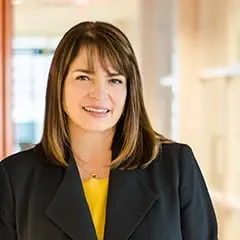 | 1 LU / HSW |
 | 1 LU / HSW |
There are many questions that our communities are asking of our schools and school facilities. How do we create safe and supportive learning environments for our students and teachers? How do we limit our impact on the environment? How can facilities benefit student learning? What can facilities do to support wellness? How can we reduce operating costs? The Collaborative for High Performance Schools (CHPS) Criteria are here to provide responses to these questions. The CHPS Criteria has been developed by a broad coalition of experts over the past two and a half decades to provide researched based answers to these questions. CHPS provides criteria for school facilities in seven categories that provide a flexible approach to making sure your school project meets or exceeds best practices for providing high quality learning environments. Each criteria provides research-based design and construction requirements that provide clear guidance for how to address these questions throughout your projects. The CHPS Criteria work for new construction and major modernization projects and a new minor renovation program will provide the tools to apply these same standards to projects of all sizes. By following these criteria schools can have confidence that they are following best practices and providing the high quality learning environments that your community needs. CHPS also provides two tiers of project verification and certification which allows each school to find the right approach for their project.
Learning Objectives:

Aaron is CEO/President and one of six Principals of Quattrocchi Kwok Architects in Northern California. With more than 20 years of experience, his work, passion and advocacy has garnered his reputation as a leader on how educational design impacts academic success. Aaron is certified as an Accredited Learning Environment Planner and is a member of the faculty of the A4LE Advanced Academy. He also advocates for school facilities with the School Energy Coalition and CHPS.

Irene offers varied experience in educational and institutional facilities. Her design knowledge ranges from renovation to new construction. As President of IN2 Architecture, Irene is involved in all aspects of a project. Irene follows trends, ensuring her client’s buildings have student success in mind. She earned the A4LE Lifetime Achievement Award, is a A4LE Fellow, is an instructor in the Advanced Academy for Educational Facility Environments and serves on the executive committee of the CHPS.

Craig is the Executive Director of the Collaborative for High Performance Schools (CHPS), an expert in K12 facilities, net zero energy, healthy environments, and climate policy. He spent seven years at the think-tank RMI, served as an Advisor on the Biden-Harris Climate/Environment/Energy Committee, and as the Chief Strategy Officer of a clean-tech startup. Craig has a M.S. in Sustainable Design from Carnegie Mellon University, and a B.S. in Geology from the University of Wisconsin.
This track addresses the Response to real-world events and experiences that impact our daily life and our ability to function normally and be productive. The response to these occurrences is reflected in the learning environments we create and leads to the question – how can schools respond to real-world crises in a way that supports the well-being of occupants and our students' learning journey? How do we respond with approaches and strategies that may be used to balance the inability and lack of needed financial resources to address deficiencies within our learning environments’ infrastructure? Topics expand on the Art approach to the theme, but also include Science in the form of findings and outcomes through case studies and examples of successful responses to real-world conditions and events such as the COVID-19 pandemic, climate change, declining student enrollment, economics, equity, and other topics.
Primary Core Competency
Design of Educational Facilities: Acts as a resource to the design team in providing ongoing guidance and support to ensure that the emerging and ultimate design aligns with the established community vision, education goals, future programming, written design standards, best/next practices and education policy.